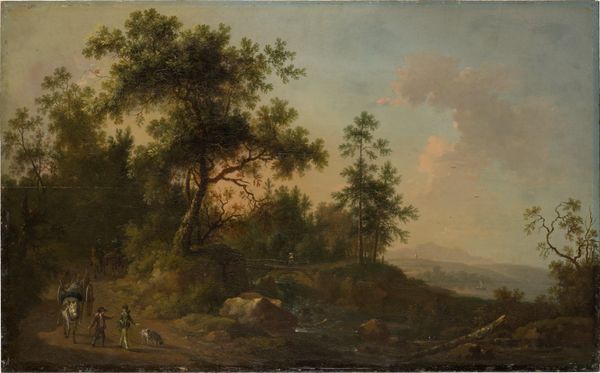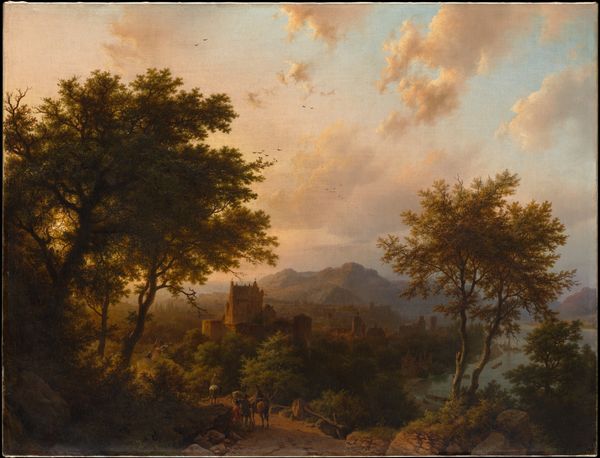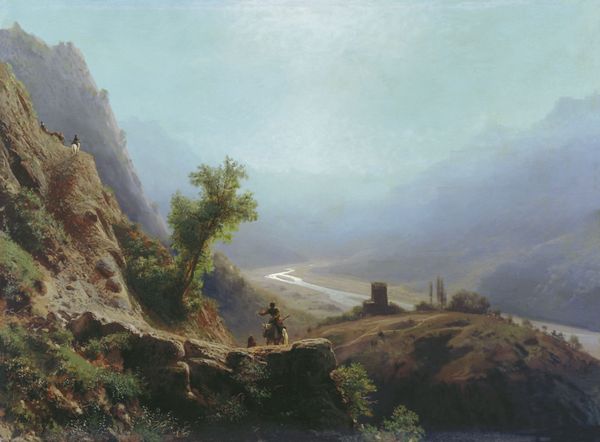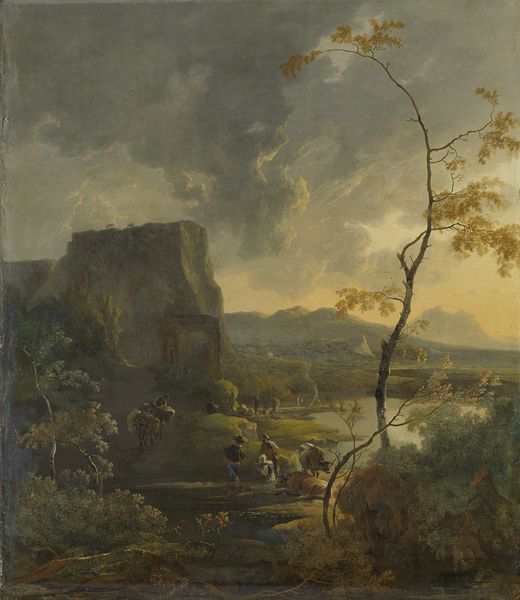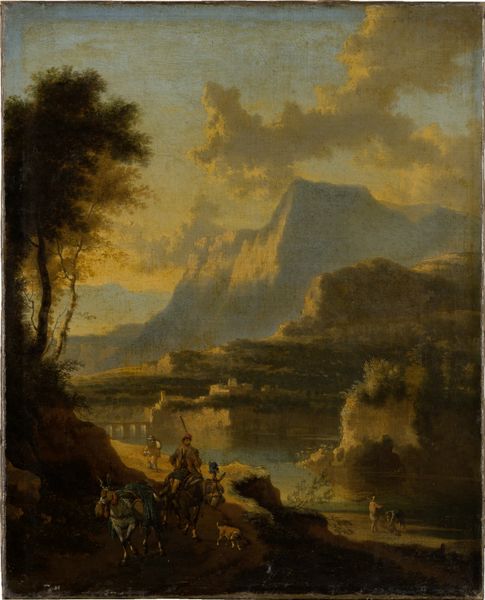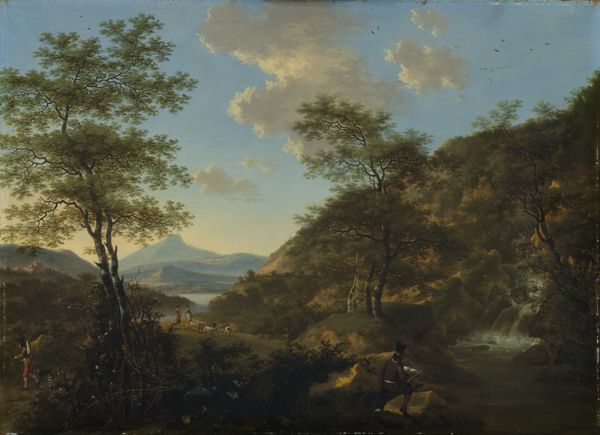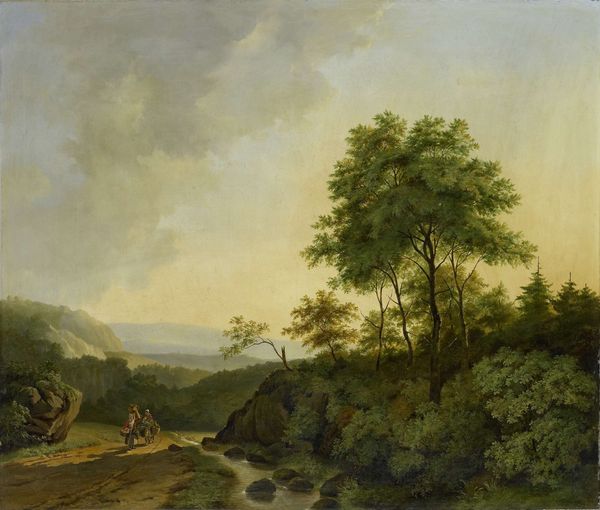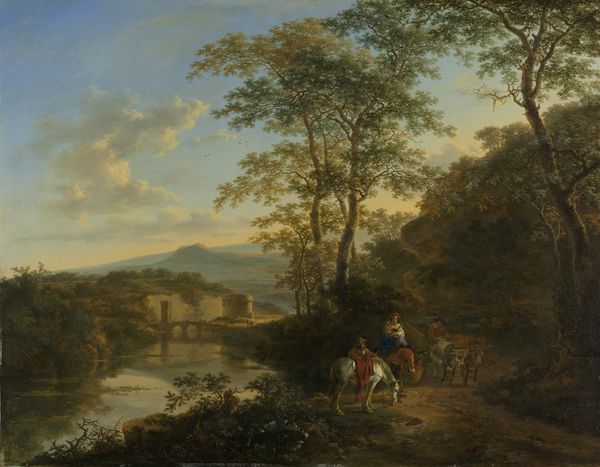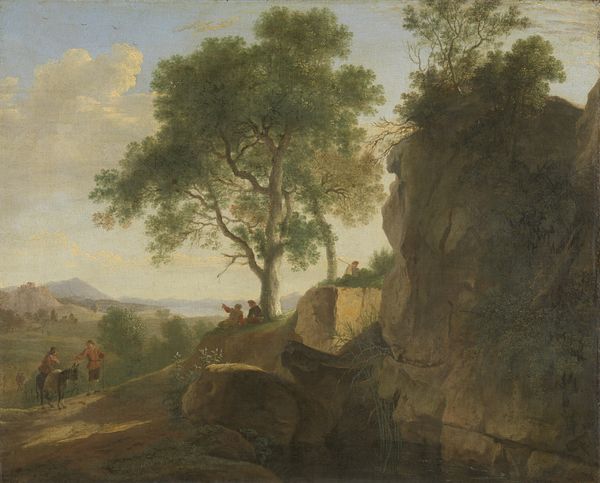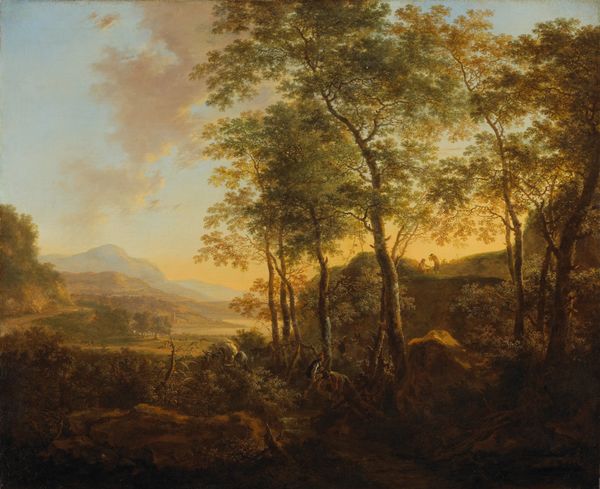
Dimensions: 47.2 x 66.5 cm
Copyright: Public Domain
Editor: This is Philipp Hieronymus Brinckmann’s “Mountain Landscape in Switzerland,” painted in 1745 using oil on canvas. There’s a subdued quality to it; it feels very different from dramatic landscapes you sometimes see from this era. What do you make of it? Curator: Well, it’s interesting to see what’s being included, and more importantly, what’s *not* included in this depiction. The sublime is almost absent, isn't it? Typically, when artists depicted landscapes in the 18th century, especially mountain landscapes, they emphasized the overwhelming power of nature. Here, the scene feels much more domesticated, less overtly awe-inspiring. What statement do you think that makes? Editor: Maybe it suggests a shift in perspective? Like nature is something to live within, not just to be scared of? The figures in the foreground almost look like they’re going for a leisurely stroll. Curator: Precisely! And think about who would commission or purchase a landscape like this. The rising merchant class, perhaps, seeking a connection with nature that affirms their sense of control and possession rather than challenges it with grandiosity. Did landscape paintings become increasingly popular as cities expanded and society urbanized? Editor: That’s a great point. These kinds of landscape paintings almost act as an affirmation, a form of comfort amid rapid social changes. And to have these “plein-air” works must have shifted painting altogether. Curator: Absolutely, because “plein-air” moves it further outside established schools of artistic production and empowers a newer definition of skill. With "Mountain Landscape in Switzerland", Brinckmann captured more than just scenery; he captured a cultural moment. What will we notice about our cultural landscape 300 years from now, I wonder. Editor: Definitely something to ponder! This conversation made me see beyond just the aesthetic beauty and consider the societal currents influencing artistic choices.
Comments
No comments
Be the first to comment and join the conversation on the ultimate creative platform.
